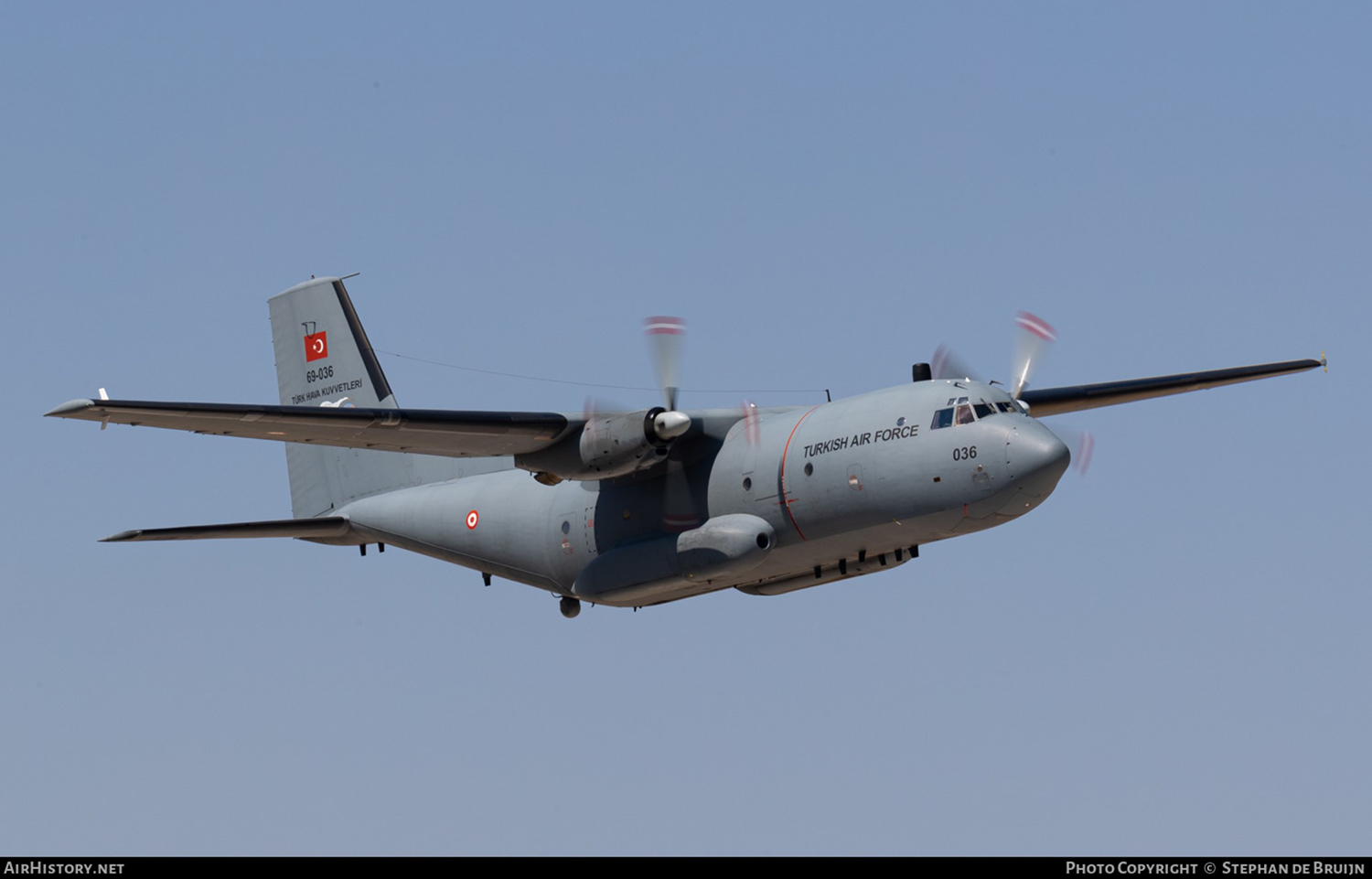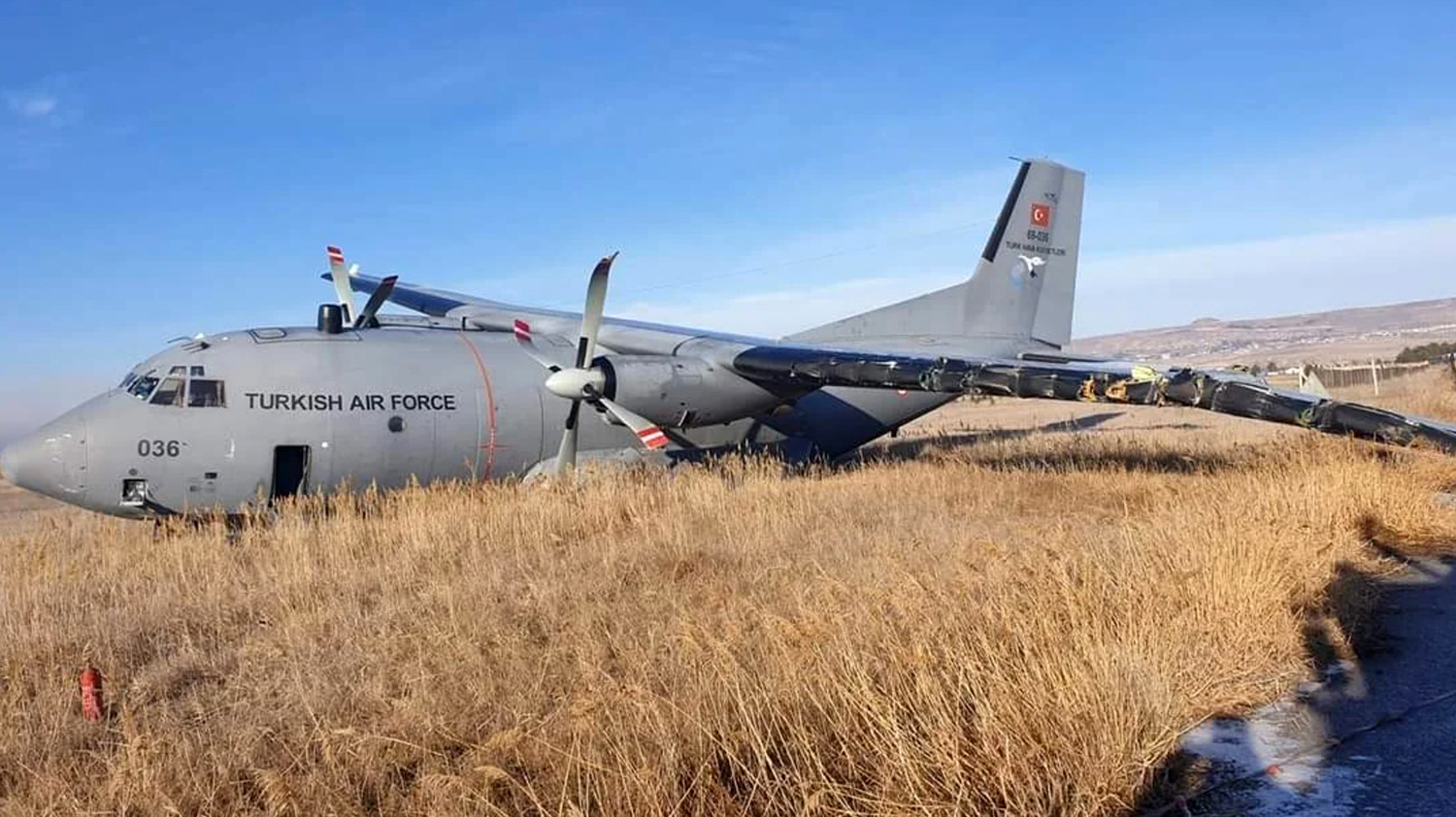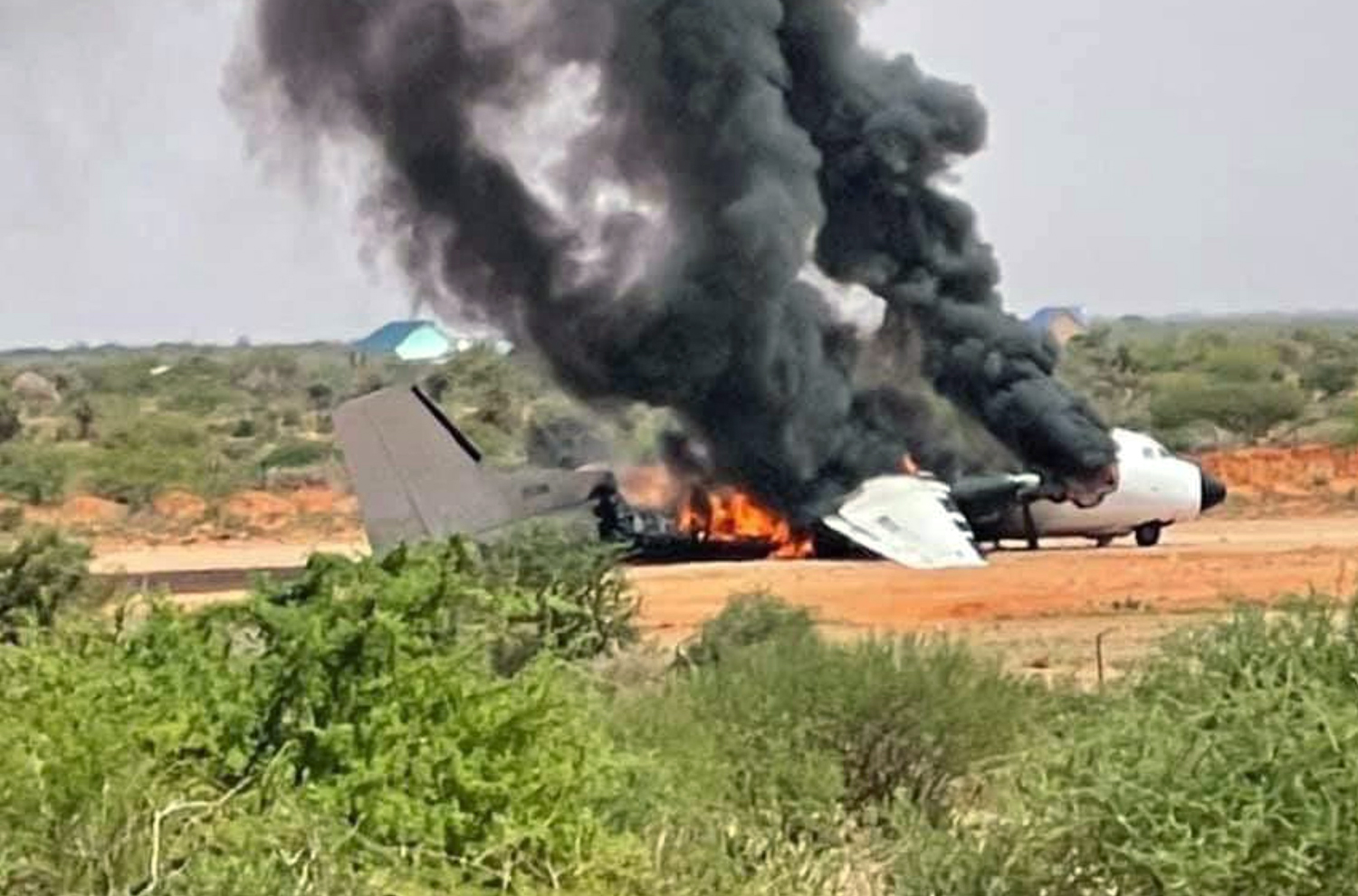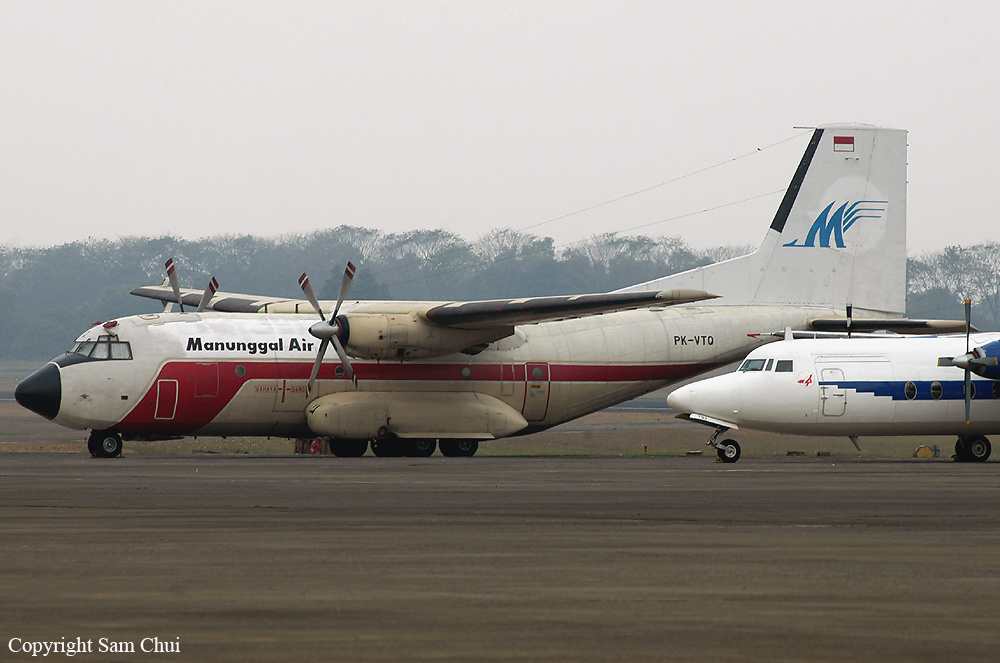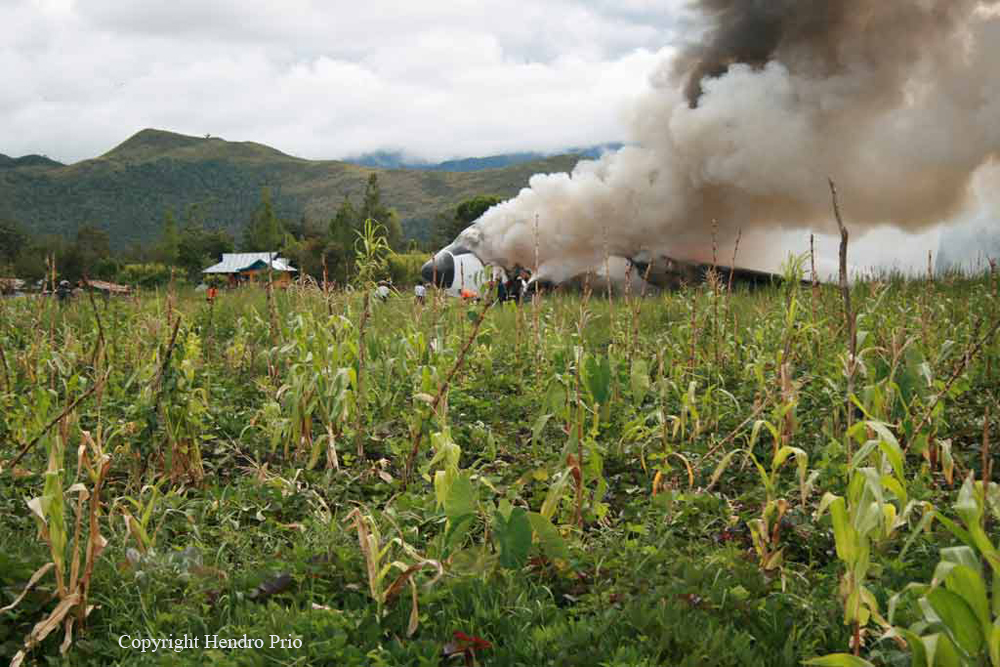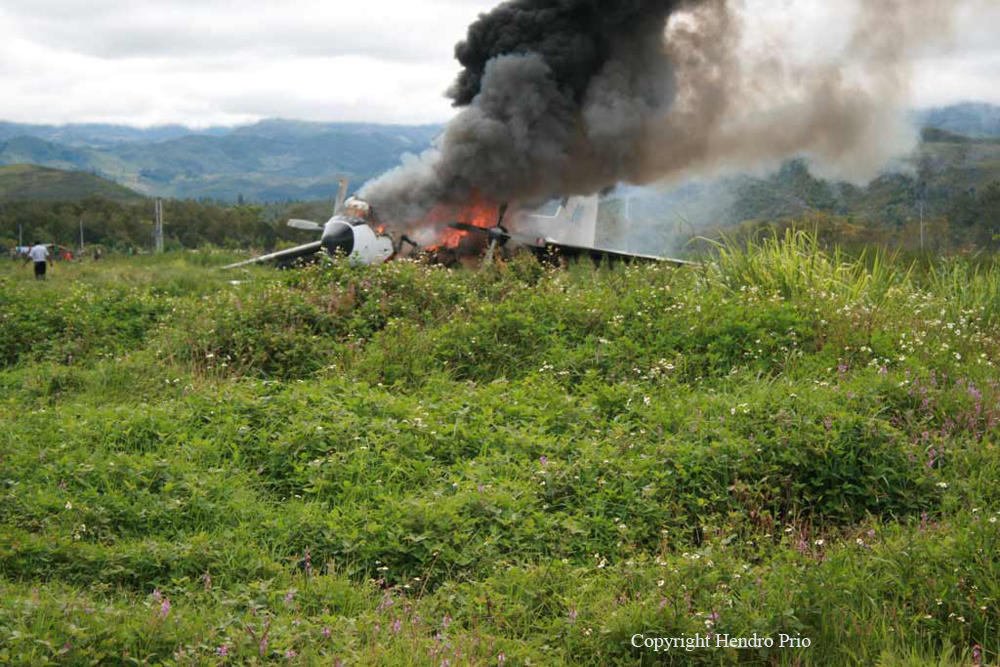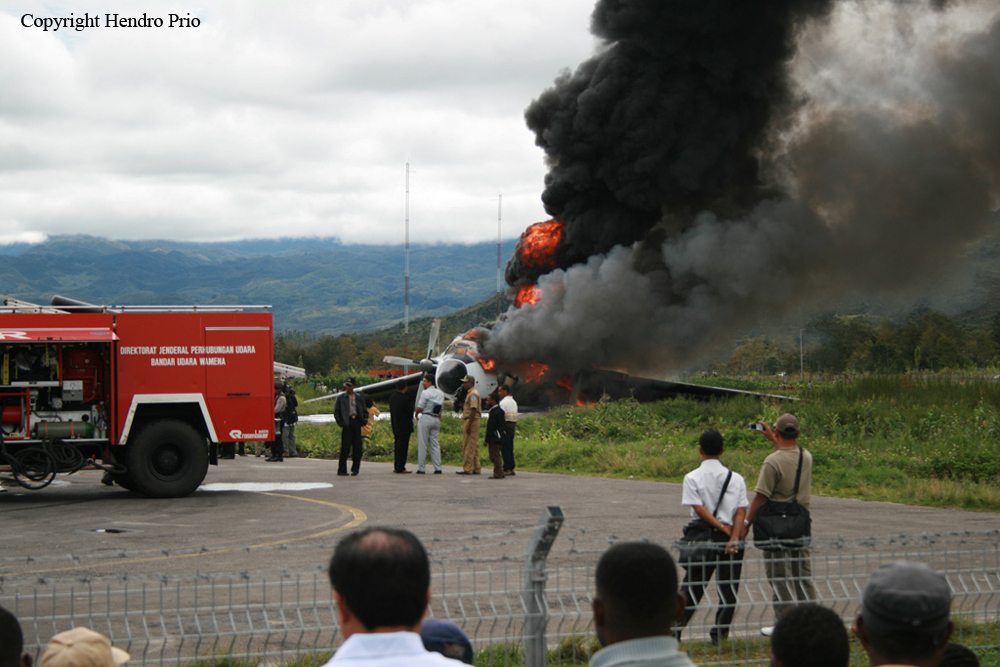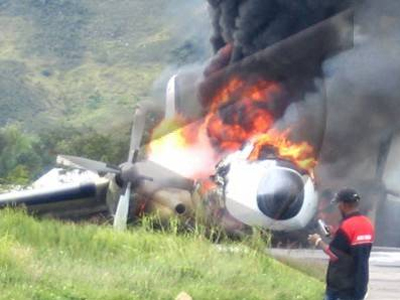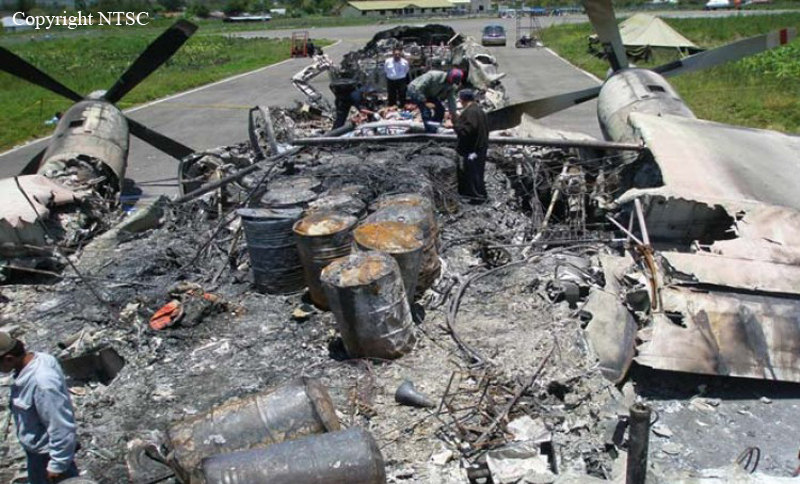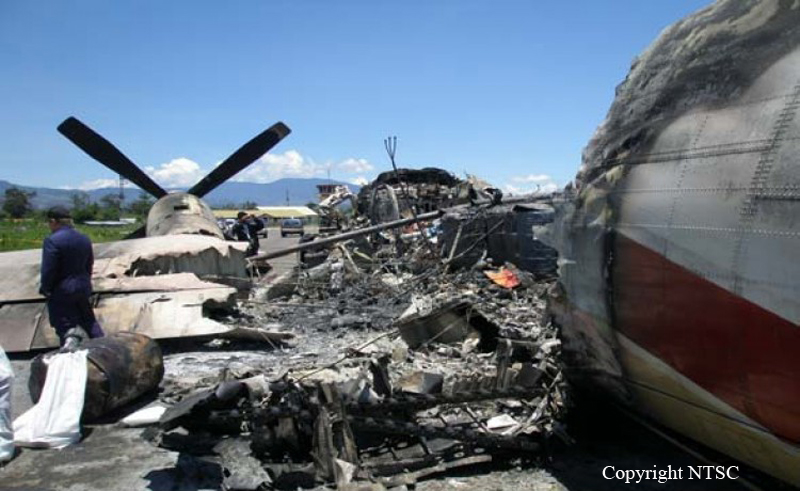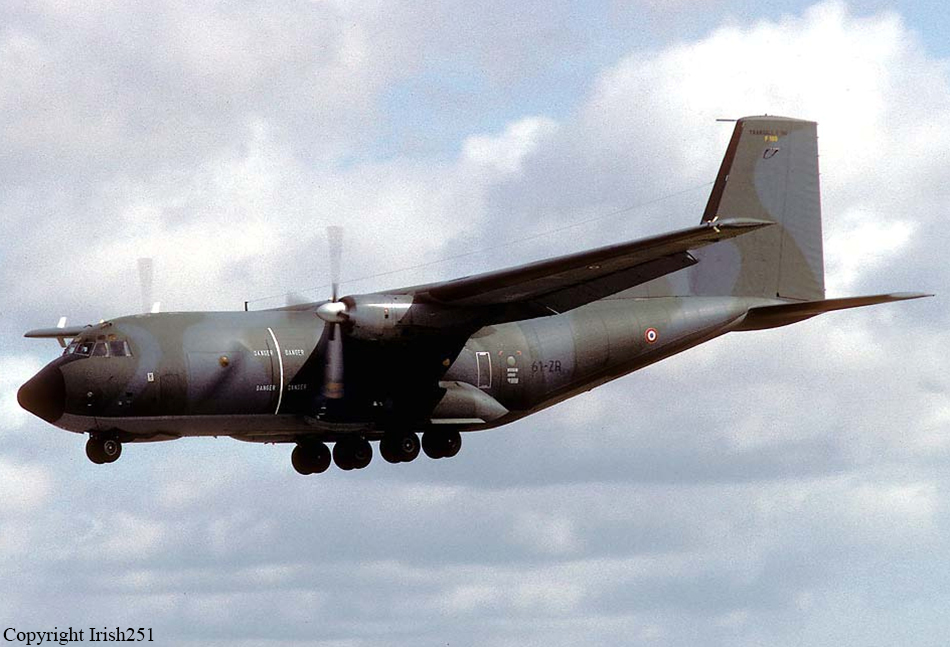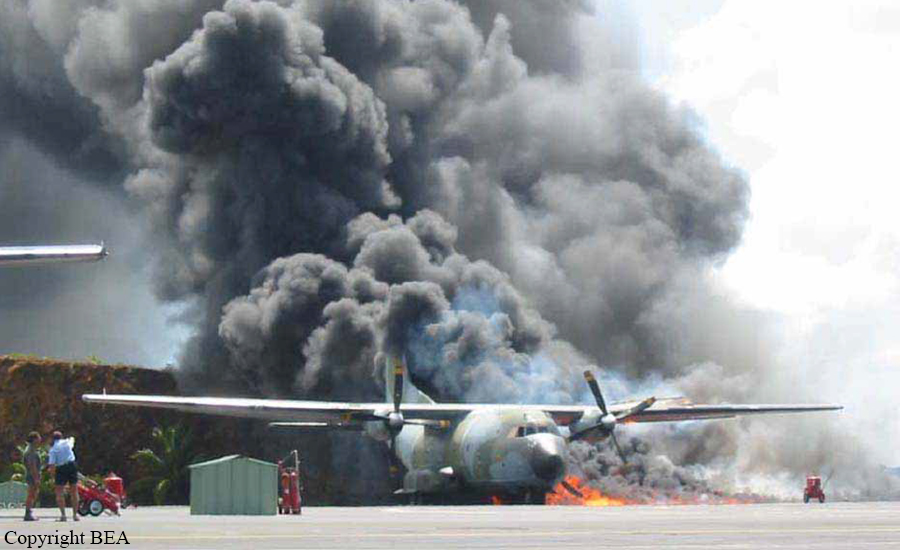Crash of a Transall C-160T in Kayseri
Date & Time:
Jan 25, 2024
Registration:
69-036
Survivors:
Yes
Schedule:
Kayseri - Kayseri
MSN:
D036
YOM:
1969
Crew on board:
0
Crew fatalities:
Pax on board:
0
Pax fatalities:
Other fatalities:
Total fatalities:
0
Circumstances:
The crew was completing a local training flight at Kayseri-Erkilet Airport on behalf of the 12 Wing. While flying in the vicinity of the airport, he encountered technical problems and elected to return for an emergency landing. The crew performed a very low approach over the surrounding districts before landing on runway 25. After touchdown, the airplane apparently encountered issues with the left main gear, slid for few hundred metres then veered off runway to the left and came to rest in a grassy area. All crew members escaped uninjured.
